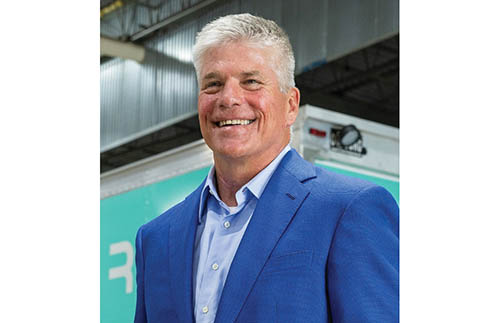— By Gregg Majewski — Propel your restaurant forward with digital transformation. Technology in the restaurant space is rapidly evolving as we enter a digital era. Every day, restaurants are taking new steps toward improving the guest experience. Virtual kitchens, mobile ordering and contactless payments have become commonalities, and while it may seem like a tall order, leaning into digital transformation is imperative for the evolution of a modern-day restaurant. Digital transformation does not always involve leveraging technological advancements. For example, it can also mean compiling dining analytics and using …
Industry Voices
— By Ray Hatch — The shocking truth about food waste: how businesses can drive positive change. Each year, a significant portion of the United State’s food supply goes unsold and uneaten, leading to about 145 billion meals ending up in landfills annually. This accounts for 38% of all food in America, with over half of the food waste originating from the food and grocery industry. As consumers are increasingly seeking environmentally friendly practices and a diverse range of high-quality food options, this puts pressure on food purchases, inventory management …
— By Samuel Hammers — Why it’s important for retailers and restaurants to strengthen their power management. Summer is the season for relaxation, but it can be a stressful time for retailers and restaurant owners looking to keep the lights on. Electrical disruptions, which tend to be more common during the summer, have potential to bring down critical systems such as HVACs and push customers to seek out greener (or cooler) pastures. A power surge could also take down POS systems and leave a facility unable to process transactions. Power …
— By Mani Kulasooriya — How e-commerce can help restaurants fight rising costs and challenges. Restaurant operators are often running an uphill marathon. From hiring and schedules to inventory management and food ordering, back-end operations can present neverending challenges. To make matters worse, according to the National Restaurant Association’s “2024 State of the Restaurant Industry” report, 97% of operators now cite rising food and labor costs as pressing issues. Fortunately, foodservice has entered a new leg of the race. E-commerce is emerging as a secret weapon to streamline operations and …
— By Savneet Singh — How cutting-edge tech helped Hooters of America upgrade its dining experience. Americans love experiences, with the majority (61%) of Gen Z and Millenials choosing to invest in them, according to Experian, over retirement savings. And with all the money they’re spending, they anticipate outstanding outcomes — especially when it comes to dining. Competition in this sector is fierce, with seemingly endless options for the 9 in 10 customers who enjoy going out to eat, per a February 2024 report by the National Restaurant Association. The …
— By Jack Child — How to choose a contractor for your parking lot striping project. Your parking lot is your welcome mat for your business. Maybe the lines are getting pretty faded. Or, maybe you’ve been tagged with a violation from the city or Fire Marshal for a code violation for improper or inadequate pavement markings. Poor or improper markings are a legal liability that should not be overlooked. It’s time to get new paint on the ground. Who do you call? The following is for those who really …
— By Lindsey Walker — Why asset tracking software is good for your restaurant business. Operating a foodservice or restaurant business involves managing various appliances, each essential for daily tasks like cooking and refrigeration. Integrating these appliances into a system that gathers data for decision-making can be time-consuming. The Internet of Things (IoT) offers a solution by utilizing appliance data to optimize property management and enhance business performance with real-time insights. From ensuring customer satisfaction to maintaining quality standards, running a restaurant or café requires careful attention to detail to …
Sustainable Retail
— By Andy Anderson — The business case for prioritizing environmental responsibility. While the retail industry plays an indispensable role in our society, bringing valuable — and often essential — products and services to consumers, and serving as a major source of employment and economic growth, it also takes a significant toll on the environment. In fact, the industry accounts for roughly 25% of global emissions, with much of these emissions occurring in the retail value chain. From the energy-intensive demands of brick-and-mortar stores to the packaging and transportation waste …
— By Jeff Kiesel — Serving up fresh, automated oil solutions to replace stale, deep-fried thinking. Oil management has historically been a struggle for restaurants and commercial kitchens. While oil plays a crucial role in food preparation, traditional oil handling can result in unsafe and dirty kitchens, frustrated staff, lower food quality and unnecessary waste. Now, new automated cooking oil management tools are allowing restaurants to embrace digital transformation and provide improved control of kitchen chaos. For those who get JIBs (joint interest billing) of oil delivered and grease removal …
— By Jay Fiske — IoT & S3: How connected equipment improves restaurant safety, service and sustainability. Every restaurant facility manager is acutely aware of how critical their back-of-house equipment (cooking, refrigeration, HVAC, etc.) is as the lifeline of their operations. When these machines go down, or an issue arises, the result is often costly health or safety concerns that can force facility closures, negatively impact customer satisfaction, and harm brand perception. In addition, back-of-house equipment also drives the bulk of the very heavy energy use in restaurants — driving …










